How to soundproof and organize a music room – tips for a more functional and productive space
Organizing a music room requires a few extra considerations compared to other spaces – here is how to craft a room worthy of musicians of any level
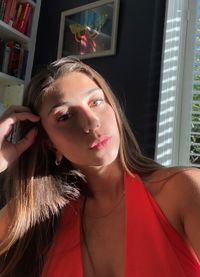
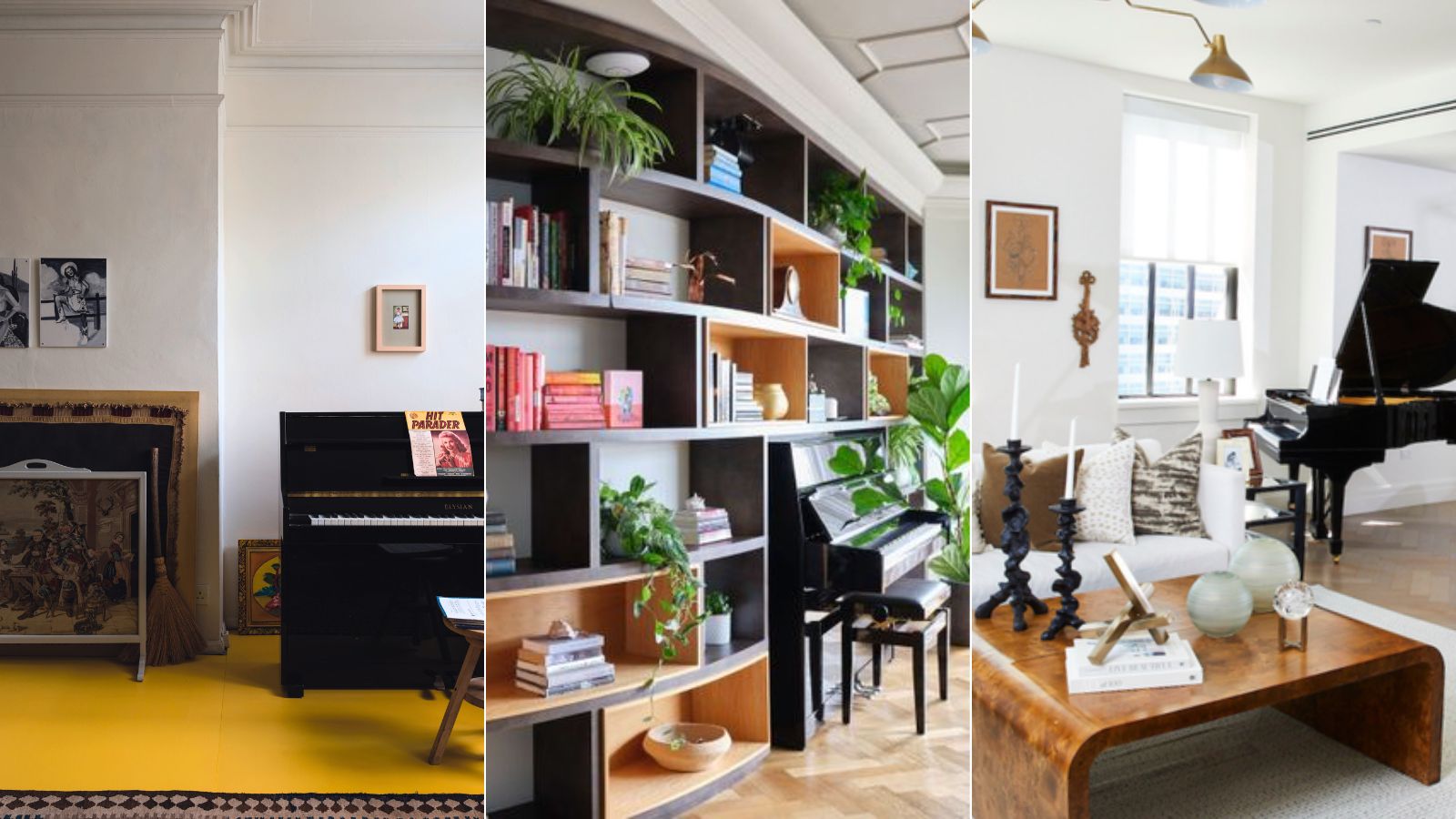
Like any workspace, music rooms can easily become messy and cluttered without proper organization. However, unlike other spaces, organization is crucial for more than just a matter of tidiness – an organized music room is essential for maintaining productivity and creating high-quality music.
To truly make a music room functional, there are a few strategies to enhance it's comfort, ease of use, and even the sound quality produced. By optimizing the layout, storage solutions, and design elements that improve acoustics and soundproofing, you can create a space that fosters your love of music.
Our organization and music experts have explained how to design and organize a space for musical activities, helping you easily plan this project without missing any crucial steps.
How to organize a music room
A music room can be anything from a living room with a piano to a dedicated room for your record collection or a professional studio for recording and producing.
Whatever your music room setup, the organization ideas below can help you design the ideal place to play, record, and listen to music in the comfort of your own home.
1. Define zones
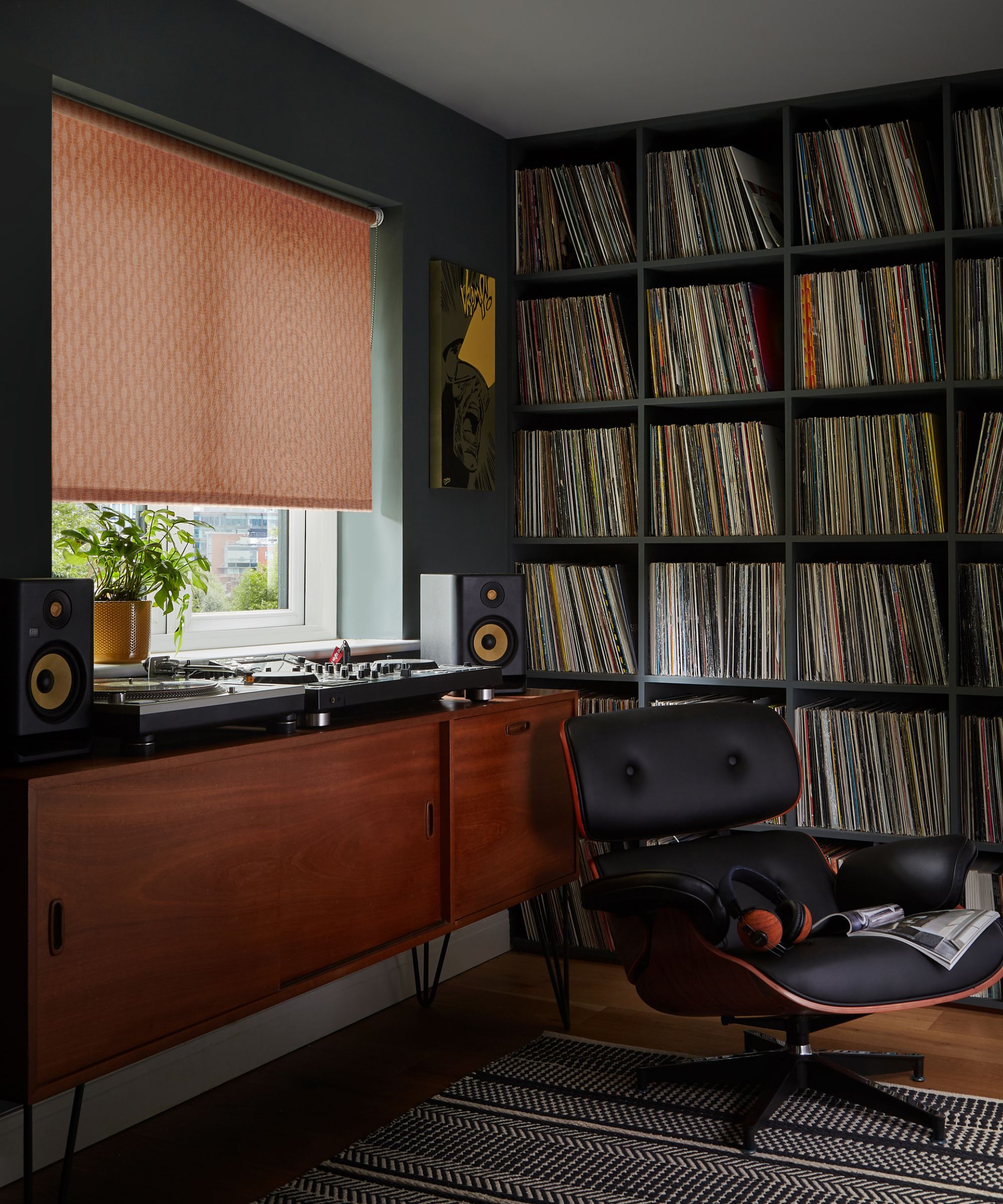
'Before investing in furniture and equipment, consider the room's primary purposes. Knowing its main function will help to guide the layout more intuitively,' explains Dawnn Hilton-Lito, general manager at One Less Thing.
'Will it be a place for collaborative jam sessions or a recording studio?' Is the room multi-instrumental? Is the room multifunctional? Is it exclusively for music practice, teaching/taking lessons, performance, editing, or study?
Design expertise in your inbox – from inspiring decorating ideas and beautiful celebrity homes to practical gardening advice and shopping round-ups.
Once you have determined the room's primary functions, you can establish designated zones for different activities.
For example, you may want to assign a space for a practice area with instruments, a desk for producing music or composing, a storage area for sheet music and accessories, and a recording area with the necessary equipment.
2. Declutter non-essential items
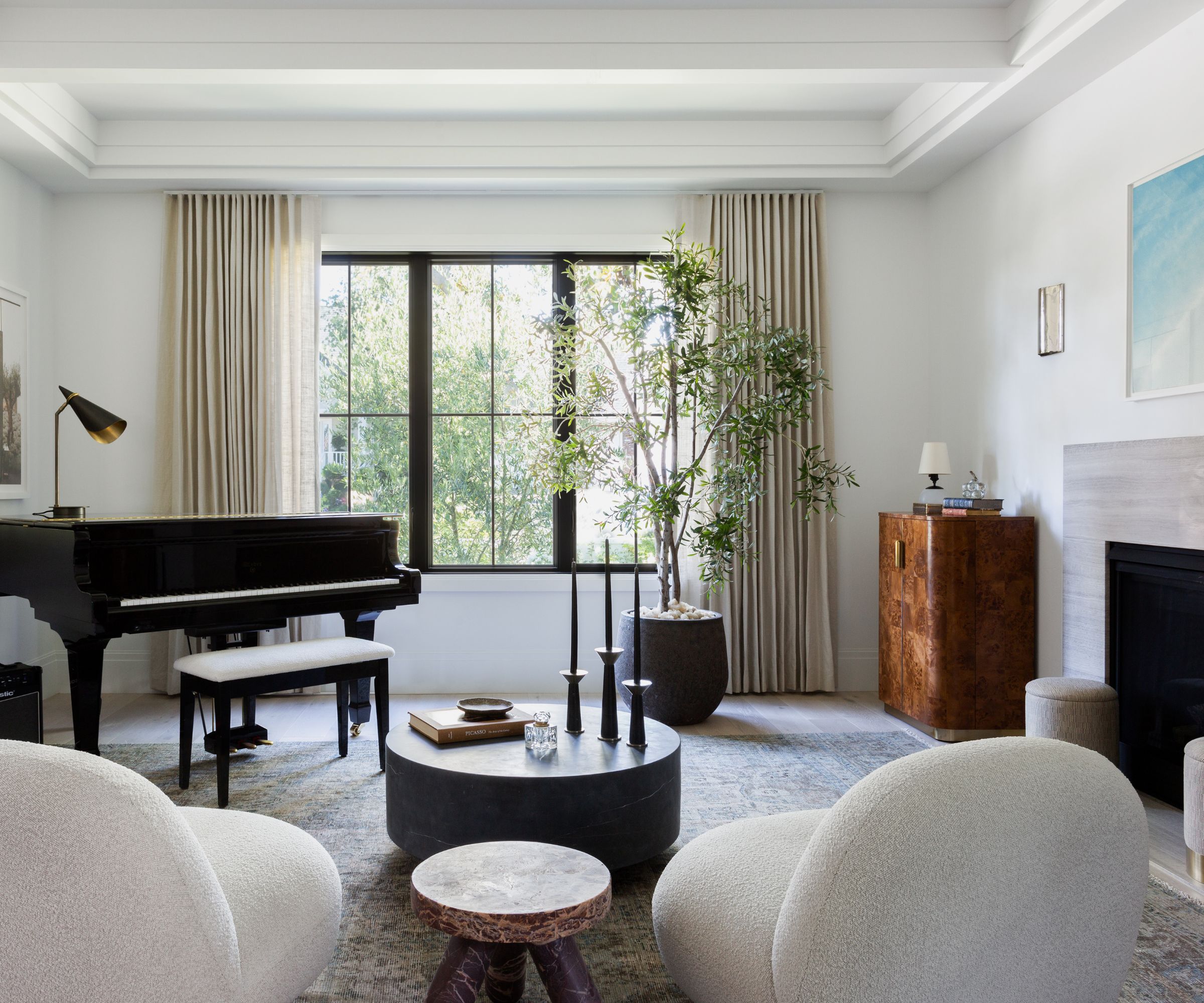
'Once the area is defined, declutter anything that is not relevant,' advises Monica Friel, chief executive organizer at Chaos To Order. 'Storing odds and ends only makes the room feel cluttered and in disarray. A cluttered room can also interfere with optimal acoustics.
'Once you determine what you have, storage pieces can be selected, and you can begin organizing the items that will be stored in this space.'
3. Determine best instrument placement
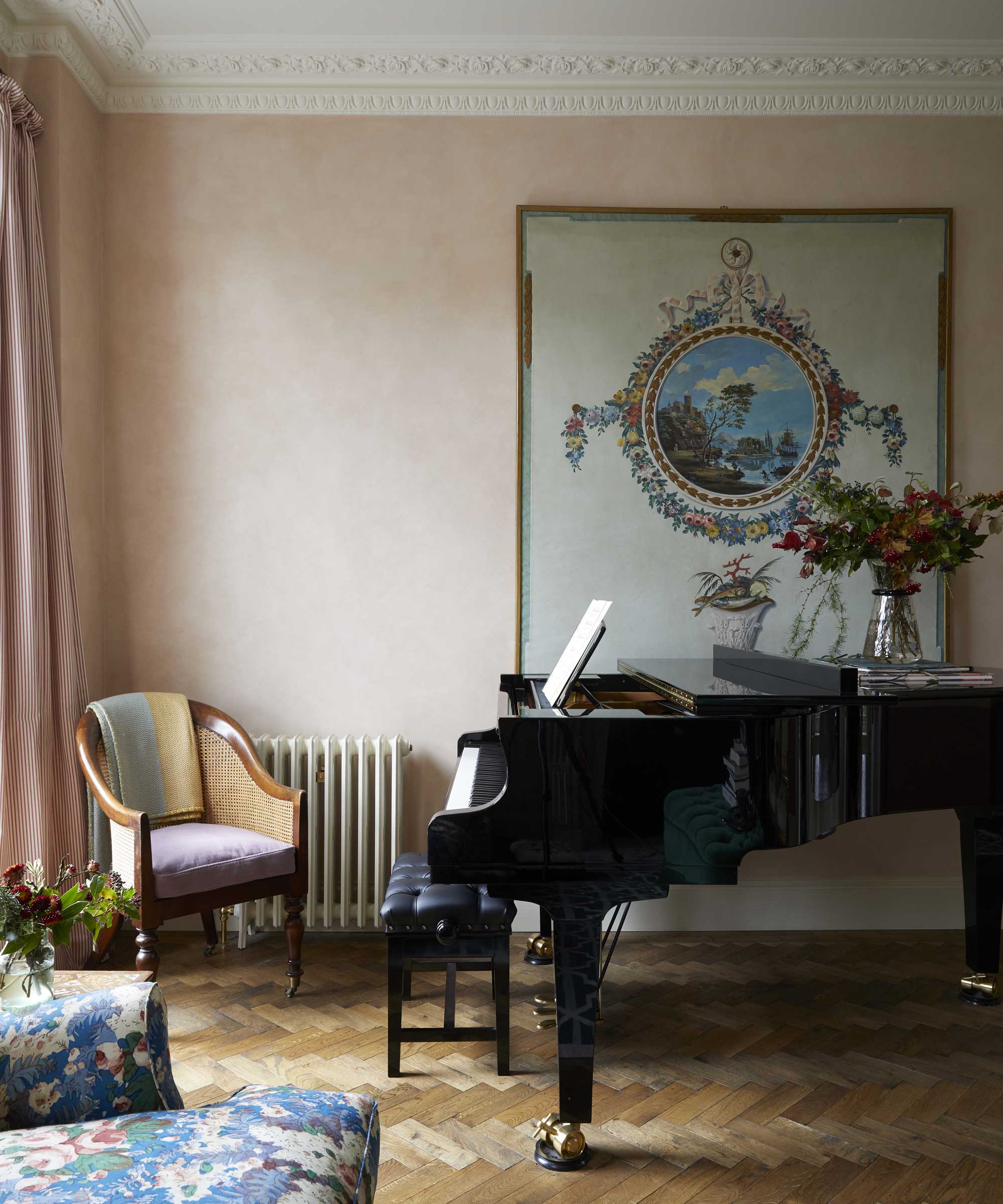
It's important to arrange instruments and equipment strategically when organizing a music room, prioritizing accessibility and ease of use.
Begin by determining the optimal placement of instruments based on their size and frequency of use:
Larger instruments like pianos or drum kits should be positioned in areas with ample space and won't obstruct movement.
Smaller instruments like guitars or violins can be displayed on wall mounts or placed in designated stands to save floor space and create an aesthetically pleasing display.
The most often used instruments should be central to your layout and stored somewhere convenient and safe.
Finally, the placement of instruments can also depend on soundproofing and acoustic factors.
4. Implement soundproofing and acoustic measures
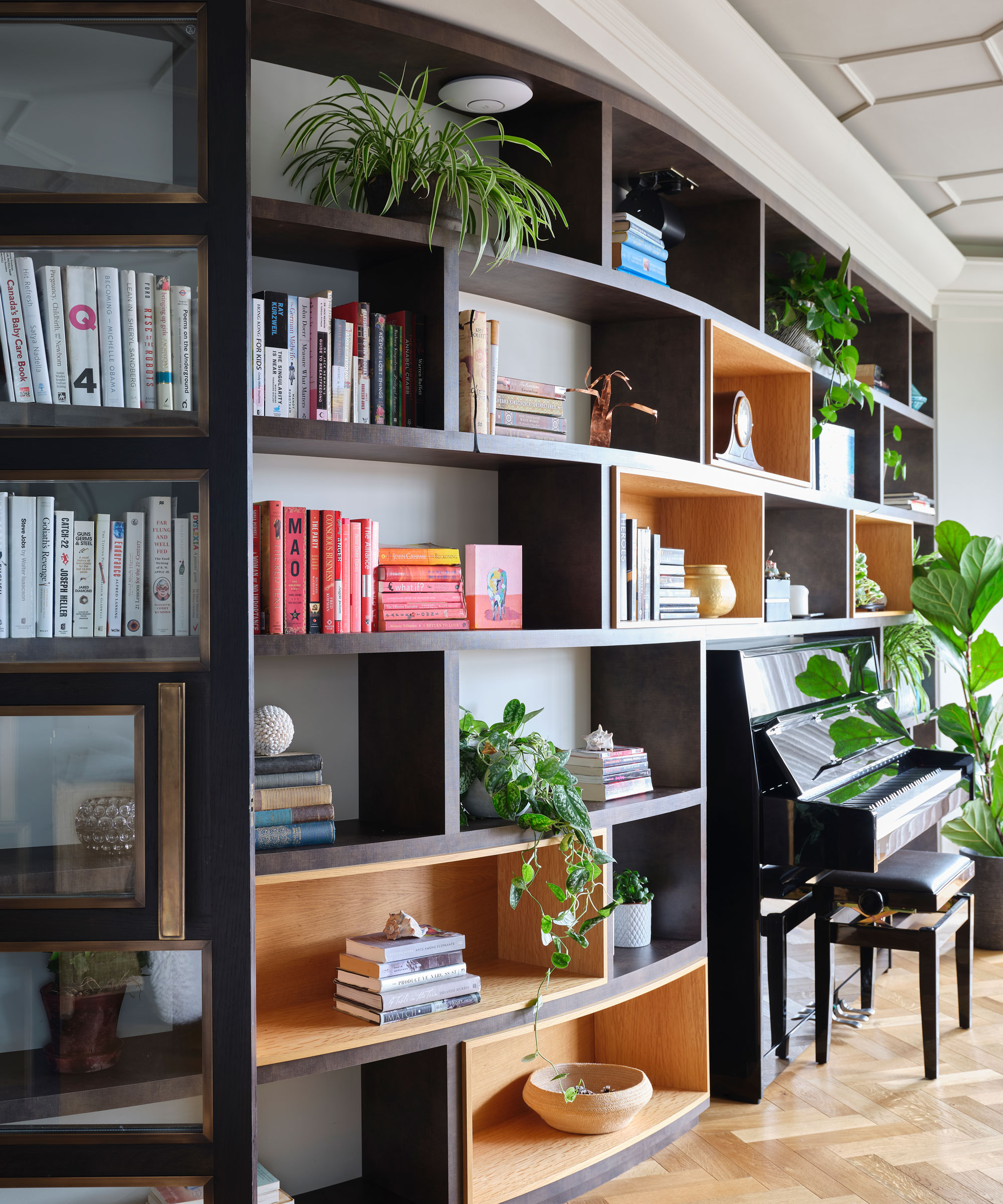
When organizing a music room, it is important to soundproof this room and consider how to optimize the acoustics. The acoustics refer to how sound behaves in an enclosed area, which can greatly affect the quality of music produced and heard in the room.
To improve the soundproofing and acoustics in your music room, you should make sure the surfaces support the sound by adding sound-absorbing materials, such as foam or acoustic panels, to reduce echoes and reverberation in key locations, like around doors, on ceilings, and adjoining walls.
'Parallel hard, flat surfaces create unpleasant acoustic effects like flutter echoes,' explains Emilio Guarino, music producer and engineer at Glitch Magic. 'Hanging some absorbent materials like acoustic tiles or foam can help, as well as placing things to break up the flat areas.'
Opt for decorative acoustic wall panels to enhance sound quality while adding visual interest. Panels can be chosen according to your design preferences, with various patterns, colors, or artwork available online.
Additionally, ensure windows and exterior walls are packed with safe-for-music fiberglass insulation.
Another effective method is strategically choosing and placing furniture to help break up sound waves. Incorporate soundproofing materials, such as heavy curtains or carpets, that help absorb sound reflections and reduce noise disturbance.
'One trick that works surprisingly well to break up room reflections is bookshelves because the books tend to be many different lengths, which help to scatter sound,' says Emilio Guarino.
'Finally, placing your instruments just right makes all the difference. Big stuff like pianos or drums should go against sturdy walls to help with sound and cut down on buzz or strange sound reflections.'
Art3d Slat Wall Panel | Was $79.99, now $59.99 from Amazon
These 3D fluted textured panel tiles are ideal for improving acoustics. They come in various colors and shapes, so you can customize them to your space and style requirements.
5. Choose suitable storage
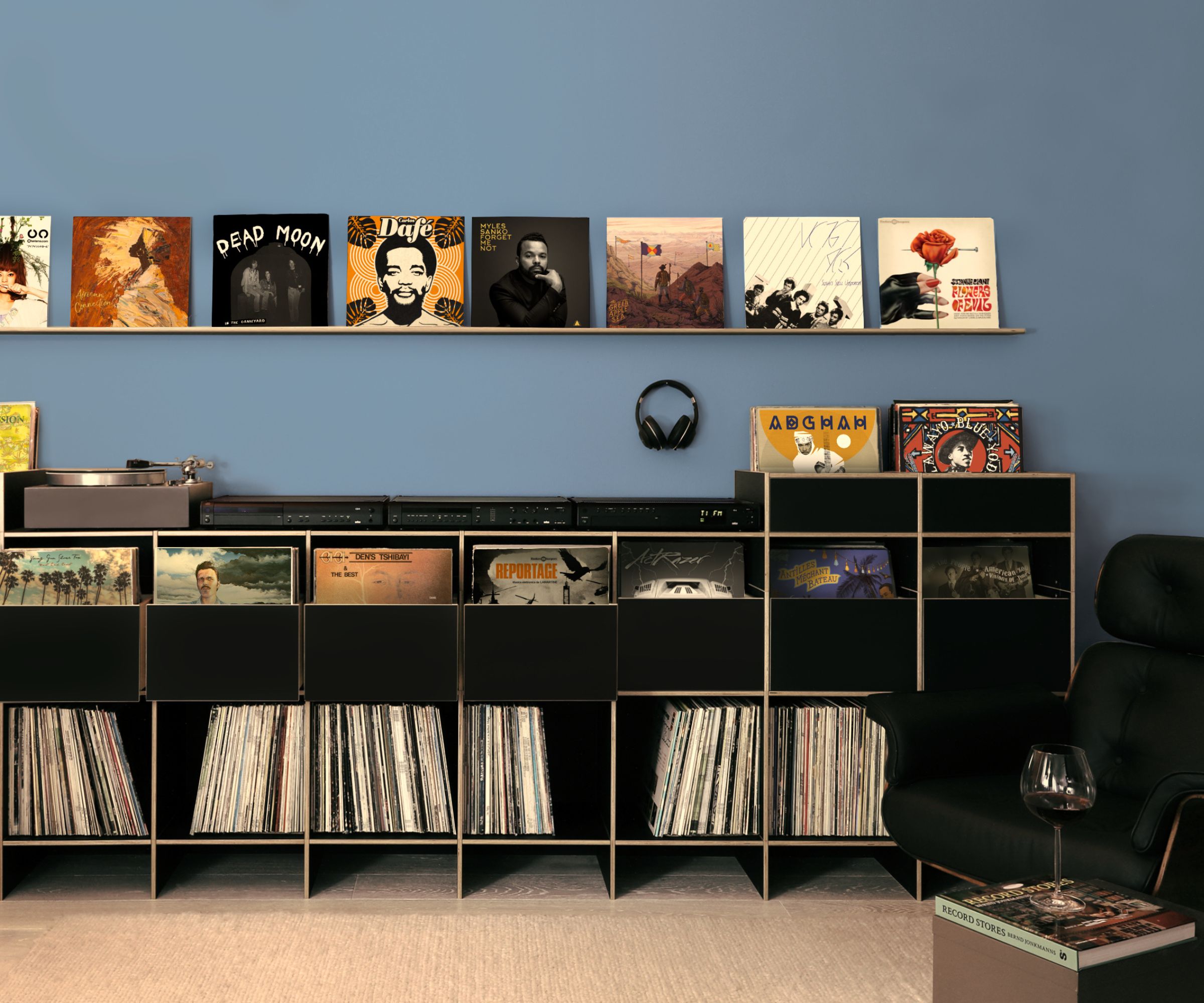
Choosing the right kind of storage will make a huge difference in keeping everything easily accessible and in good condition.
'Shelving units, instrument racks, hooks, and cabinets specifically designed for musical instruments are key items that will help to keep everything stored safely and keep regularly used items on hand,' says Dawnn Hilton-Lito. For example, these guitar hooks, from Amazon, can conveniently store guitars off the floor.
Utilize clear plastic bins or baskets for smaller and infrequently used items like extra mics, backdrops, and spare parts. These can prevent them from getting lost and maintain a tidy space. For sheet music, you can use binders or folders to keep them organized and labeled.
You may also want to consider investing in digital storage options, such as a tablet or computer, to store your sheet music electronically and reduce the need for paper filing.
6. Furniture choices
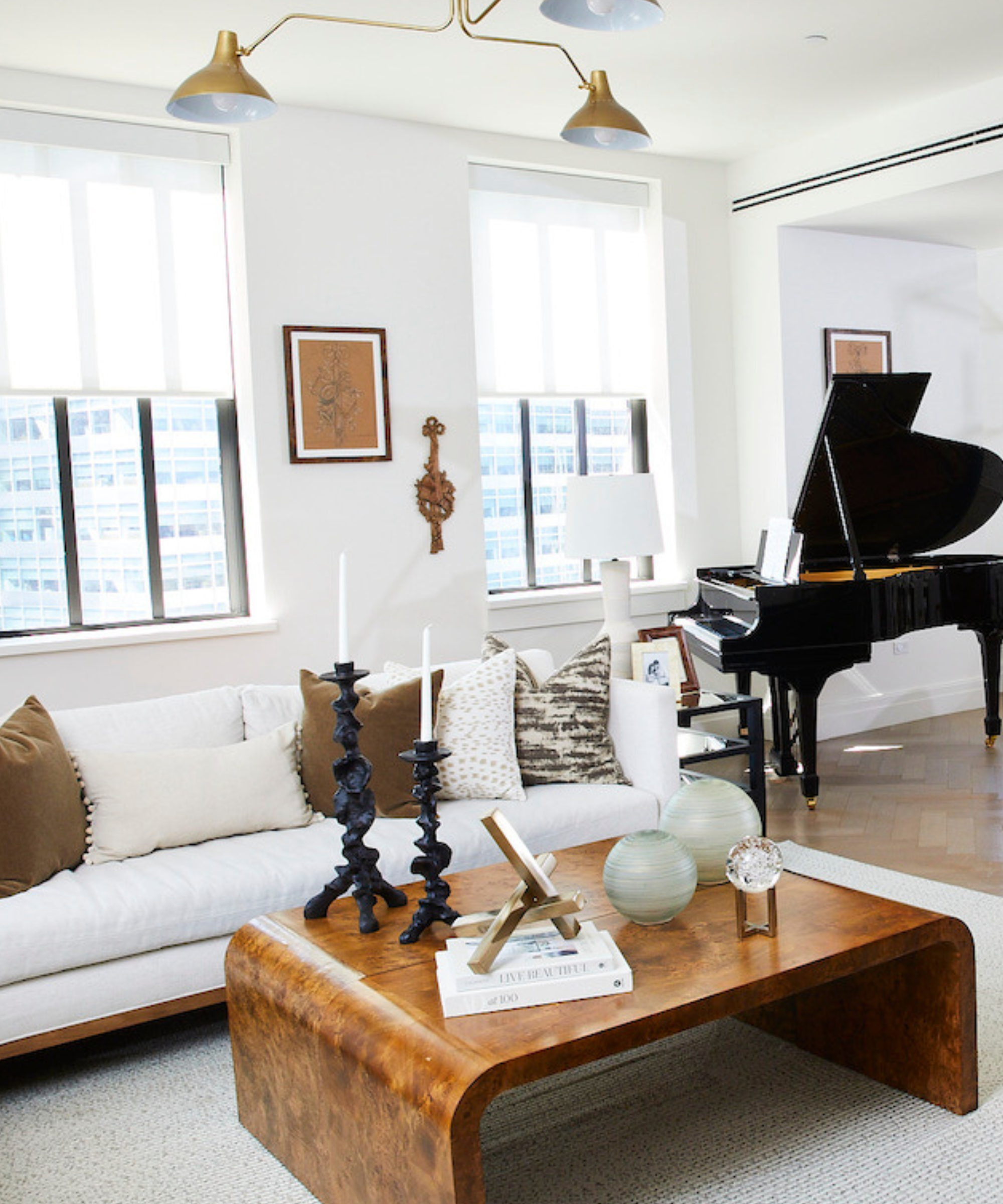
'Choose furniture that can be easily rearranged or adjusted to suit different activities and needs,' recommends Nancy Parrish of Nancy Parrish Interiors Flexible. 'For one, flexible seating options such as stools or chairs with casters will allow for easy movement and adaptability within the space.'
Proper seating and stand height can also help prevent discomfort and fatigue during practice sessions. Ensure you have a sturdy and adjustable music stand for sheet music and a comfortable stool or chair – such as this Beaussicot task chair from Wayfair – for playing, composing or recording sessions.
Lastly, incorporating furniture that doubles as storage can be a great space-saving hack to reduce visual clutter. 'Opt for decor and furniture materials that contribute to good acoustics,' advises Nancy Parrish. 'Avoid materials that reflect sound harshly, such as glass or metal. Instead, choose softer materials like fabric or wood that can help absorb and diffuse sound.'
7. Consider cable management
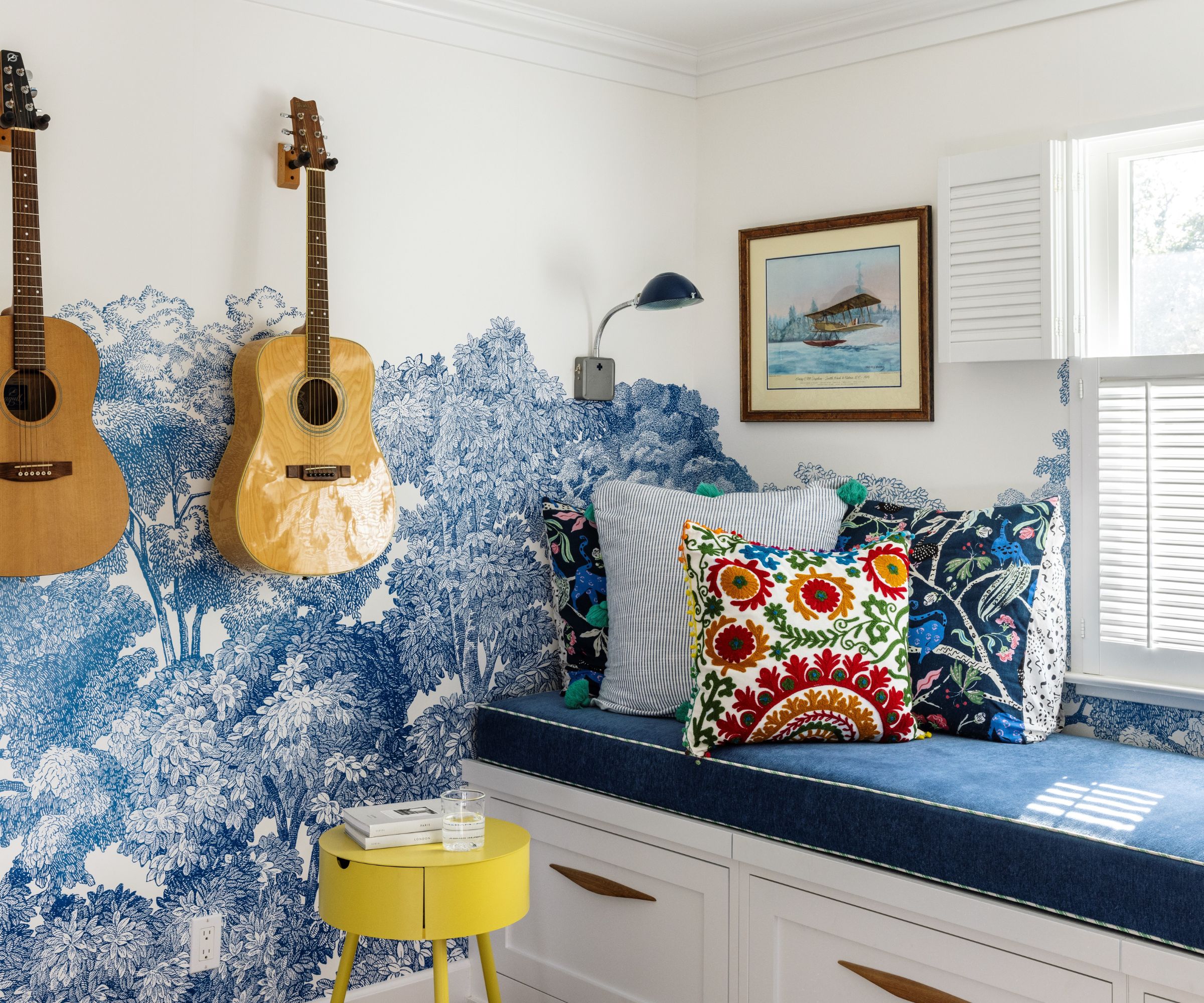
'Keeping musical cables organized can be as simple as using ties or clips to prevent them from getting tangled,' says Dawnn Hilton-Lito. 'Install cable channels, use sleeves to bind up bunches of cables that run to the same place, and use cable boxes to manage power supplies.'
You should also keep cables and power strips away from key traffic areas. Cable organizers or clips can secure cables along walls or furniture to keep pathways clear.
These are all low-cost additions to organize your music room but can make a big difference in aesthetics, convenience, and safety. We recommend this NOROCME Cord Management Organizer Kit from Amazon.
8. Label storage

Music tends to involve many small odds and ends that can be hard to keep track of, regardless of whether you're using your music room to listen, make, or practice music.
So, investing in a label maker is always a great idea, especially if multiple people use the space. This will make locating and returning items easier, ensuring your music room remains organized.
You can use this Bluetooth label maker from Amazon.
Once your music room is set up in the way you want, you can take a reference photo to help you remember how to keep it that way. However, it's also important to stay flexible with your organization system to accommodate changes in your instrument collection or musical interests. Regularly assess your storage needs and make adjustments to optimize space and functionality.

Lola Houlton is a news writer for Homes & Gardens. She has been writing content for Future PLC for the past six years, in particular Homes & Gardens, Real Homes and GardeningEtc. She writes on a broad range of subjects, including practical household advice, recipe articles, and product reviews, working closely with experts in their fields to cover everything from heating to home organization through to house plants. Lola is a graduate, who completed her degree in Psychology at the University of Sussex. She has also spent some time working at the BBC.
